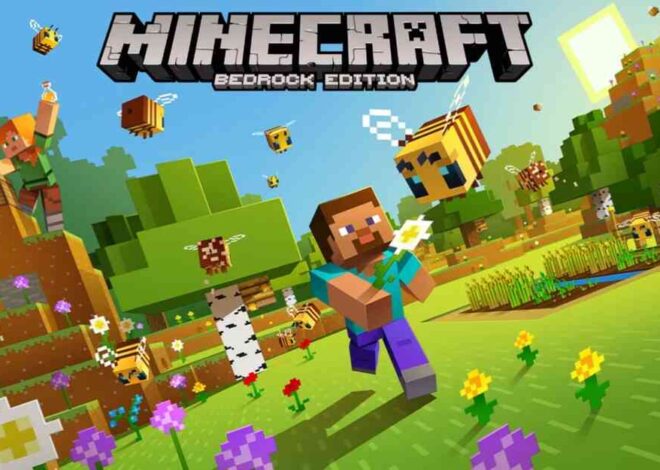Expressive Art with Pencil Drawings: A Journey into Detailed Sketching
Pencil drawings have been a foundation of visual art for centuries. The simplicity of a pencil, combined with an artist’s imagination and skill, can produce intricate, expressive works that resonate with viewers on a deep, emotional level. Pencil drawings capture details, convey textures, and create a level of realism that can make sketches look like photographs or fantastical worlds spring to life. This article explores the art form of pencil drawings, how artists use pencils to express emotions and stories, and some practical techniques for those looking to enhance their skills.
Why Pencil Drawings Are a Unique Art Form
The appeal of pencil drawings lies in their versatility and accessibility. Unlike other art forms that may require expensive materials, a pencil and paper are relatively inexpensive and widely available. The simplicity of the tools belies the complexity that can be achieved with skillful shading, blending, and line work.
Pencil drawings allow for an incredible range of artistic expression. With just a pencil, artists can create hyper-realistic portraits, imaginative landscapes, abstract pieces, or illustrations full of emotion. Pencil drawings are also more forgiving than other mediums. Mistakes can often be corrected, allowing artists to experiment freely without fear of permanently ruining their work. This flexibility makes it an ideal medium for beginners while also providing experienced artists with the tools needed to create masterpieces.
Types of Pencil Drawings and Their Styles
Pencil drawings are not confined to a single style. Artists can explore numerous techniques and styles, each with its own set of rules and effects. Here are some of the most popular types of pencil drawing styles:
1. Realism
Realistic pencil drawings aim to replicate subjects as accurately as possible. Artists who specialize in realism pay close attention to details, using shading and contrast to create a lifelike effect. This style is often used for portraits, where capturing the essence of a person’s face requires a precise and careful approach. Realistic pencil drawings often involve extensive knowledge of anatomy, texture, and lighting.
2. Sketching
Sketching is usually quicker and looser than realism. It’s often used as a foundational step in creating more detailed artworks or as a way to quickly capture ideas. Many artists use sketching to map out the basic proportions and compositions of a piece before committing to detailed shading and rendering. However, sketching can also stand on its own as a finished art style, especially when capturing dynamic movement or rough, raw emotion.
3. Hyperrealism
Hyperrealism pushes realism to the extreme. These drawings look so real that they’re often mistaken for photographs. Achieving hyperrealism in pencil drawing requires a profound level of patience and precision, as every tiny detail must be painstakingly rendered. This style often requires a high level of skill and years of practice, as well as special pencils and paper that allow for very fine lines and smooth shading.
4. Abstract Pencil Drawings
Abstract art in pencil drawing deviates from realistic representation and instead focuses on shapes, lines, and forms. It gives the artist more freedom to convey emotions or ideas without being tied to recognizable subjects. Abstract pencil drawings can be expressive and thought-provoking, often encouraging viewers to interpret the artwork in personal ways.
5. Surrealism
Surrealist pencil drawings bring elements of fantasy and dream-like imagery into art. Artists blend realistic elements with imaginative or unusual aspects, creating scenes that are at once familiar and strange. This style requires a strong foundation in realistic drawing techniques, as artists need to convincingly render fantastical subjects.
Tools of the Trade: Choosing the Right Pencils for Drawing
The quality of a pencil drawing is influenced not only by the artist’s skill but also by the choice of pencils. Different pencils produce different effects, and understanding these distinctions is crucial for any aspiring artist.
Graphite Pencils
Graphite pencils are the most commonly used tools in pencil drawing. They come in various grades, ranging from hard (H) to soft (B). Hard pencils, like 2H or 4H, produce light, fine lines and are ideal for detailed work and preliminary sketches. Soft pencils, like 2B or 6B, create darker lines and are perfect for shading and adding depth. Many artists carry a range of graphite pencils to achieve a full spectrum of light and dark tones in their work.
Charcoal Pencils
Charcoal pencils are much softer and darker than graphite pencils. They are excellent for bold, dramatic shading and adding depth, especially in portrait drawing. However, charcoal pencils are less precise and can be challenging to control, making them better suited for expressive, textured drawings rather than highly detailed work.
Colored Pencils
Though often associated with coloring books, colored pencils can be used for stunning, vibrant artwork. Artists can blend and layer colors to produce rich effects. Colored pencils allow for a unique approach to pencil drawing, where the artist can combine color theory with traditional drawing techniques.
Mechanical Pencils
Mechanical pencils offer a consistent line width, which is useful for detailed work and intricate lines. They are excellent for technical drawings or highly detailed portions of a larger piece. However, they lack the shading range of traditional pencils, which limits their use in some styles of art.
Techniques for Creating Expressive Pencil Drawings
Creating expressive pencil drawings involves a mastery of technique as well as an understanding of light, texture, and perspective. Here are some essential techniques to develop:
Shading and Blending
Shading is what gives pencil drawings depth and dimension. By gradually transitioning from light to dark, artists can create the illusion of three-dimensionality. Blending tools, like paper stumps or blending pencils, help smooth out transitions and create soft shadows. Proper shading also involves understanding light sources and how shadows fall across different textures.
Cross-Hatching
Cross-hatching is a technique where the artist creates layers of intersecting lines to add texture and shading. This technique is commonly used in sketching and can be an effective way to show depth and volume without extensive blending. The density of the lines and their direction can create various effects, adding expressiveness and dynamism to the drawing.
Scribbling
Scribbling is a loose, free-form technique that can add texture and energy to a drawing. By rapidly moving the pencil across the paper, artists can create a dynamic, spontaneous effect that’s particularly effective in abstract or impressionistic drawings.
Erasing for Highlights
Erasing isn’t just for correcting mistakes; it can also be used as a drawing technique. By carefully erasing parts of a drawing, artists can create highlights and reflective surfaces. Erasers are especially useful for creating the illusion of light glinting off objects or for adding fine details like strands of hair.
Expressing Emotion Through Pencil Drawings
Art is a powerful medium for expressing emotions, and pencil drawings are no exception. Artists can manipulate shading, line thickness, and even texture to convey a wide range of emotions.
Soft, Light Shading for Tranquility
Soft, delicate shading can evoke a sense of calmness and tranquility. Artists often use this approach when drawing serene landscapes or peaceful portraits. Light shading and minimal contrast can make a drawing feel gentle and soothing to the viewer.
Dark, Bold Lines for Drama
When artists want to express intensity or drama, they often use bold, dark lines and high contrast. This approach can be effective for creating shadows or depicting scenes of tension. By increasing the contrast between light and dark areas, artists can heighten the emotional impact of a drawing.
Expressive Lines and Movement
Expressive line work, such as thick, jagged lines or dynamic strokes, can convey a sense of movement and urgency. This style is often used in sketches or abstract pencil drawings to communicate excitement, chaos, or spontaneity. Lines that vary in thickness and direction can add a sense of rhythm to the artwork.
Tips for Beginners to Get Started with Pencil Drawing
If you’re new to pencil drawing, it’s important to start with the basics and gradually build your skills. Here are some tips to get you started:
- Practice Basic Shapes: Start with simple shapes like circles, squares, and triangles. These shapes are the building blocks of more complex subjects.
- Experiment with Shading: Try different shading techniques to see how light and shadow interact. Begin with a basic gradient from light to dark, then practice shading spheres to simulate three-dimensionality.
- Use Reference Images: Studying reference images, whether photos or real-life objects, helps you understand how to draw different textures and shapes accurately.
- Keep Practicing: The key to improving your skills in pencil drawing is consistent practice. Set aside time each day to draw, even if it’s just for a few minutes.
The Lasting Impact of Pencil Drawings in Art
Pencil drawings continue to be a significant art form, cherished for their ability to capture detail and express emotion with a single, humble tool. From rough sketches to hyper-realistic portraits, pencil drawings offer endless possibilities for artistic exploration. For anyone with a passion for art, pencil drawings provide a versatile medium to express ideas and emotions, whether through simple lines or elaborate, textured renderings.
In conclusion, pencil drawings are an art form accessible to all, yet rich with potential for profound artistic expression. With practice, experimentation, and a love for detail, artists can use pencils to create drawings that speak volumes and capture the essence of their subjects. Whether you’re a beginner or an experienced artist, pencil drawings offer a rewarding journey into the world of visual storytelling.
Also Read Interesting articles at The Flip Buzz


